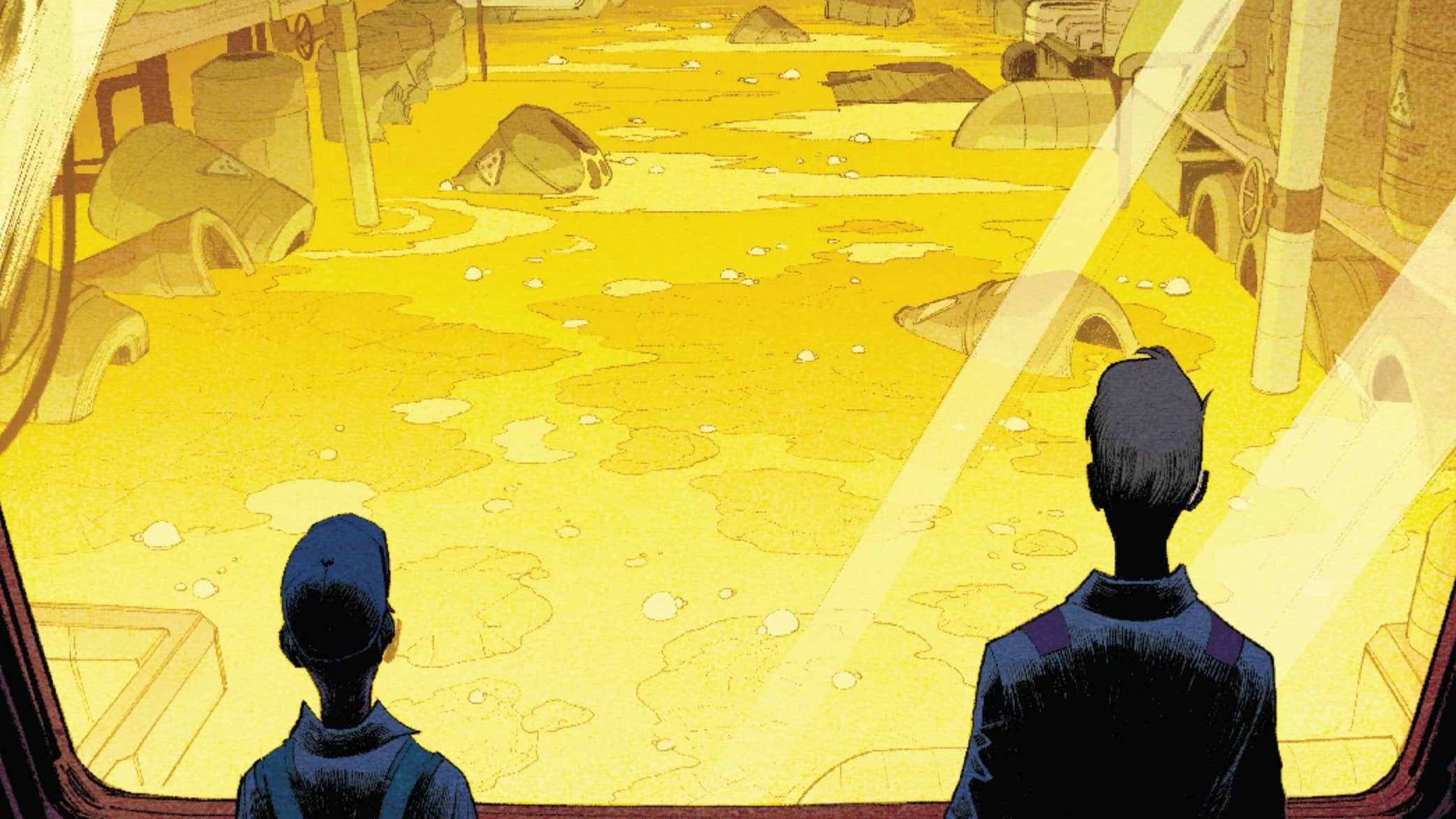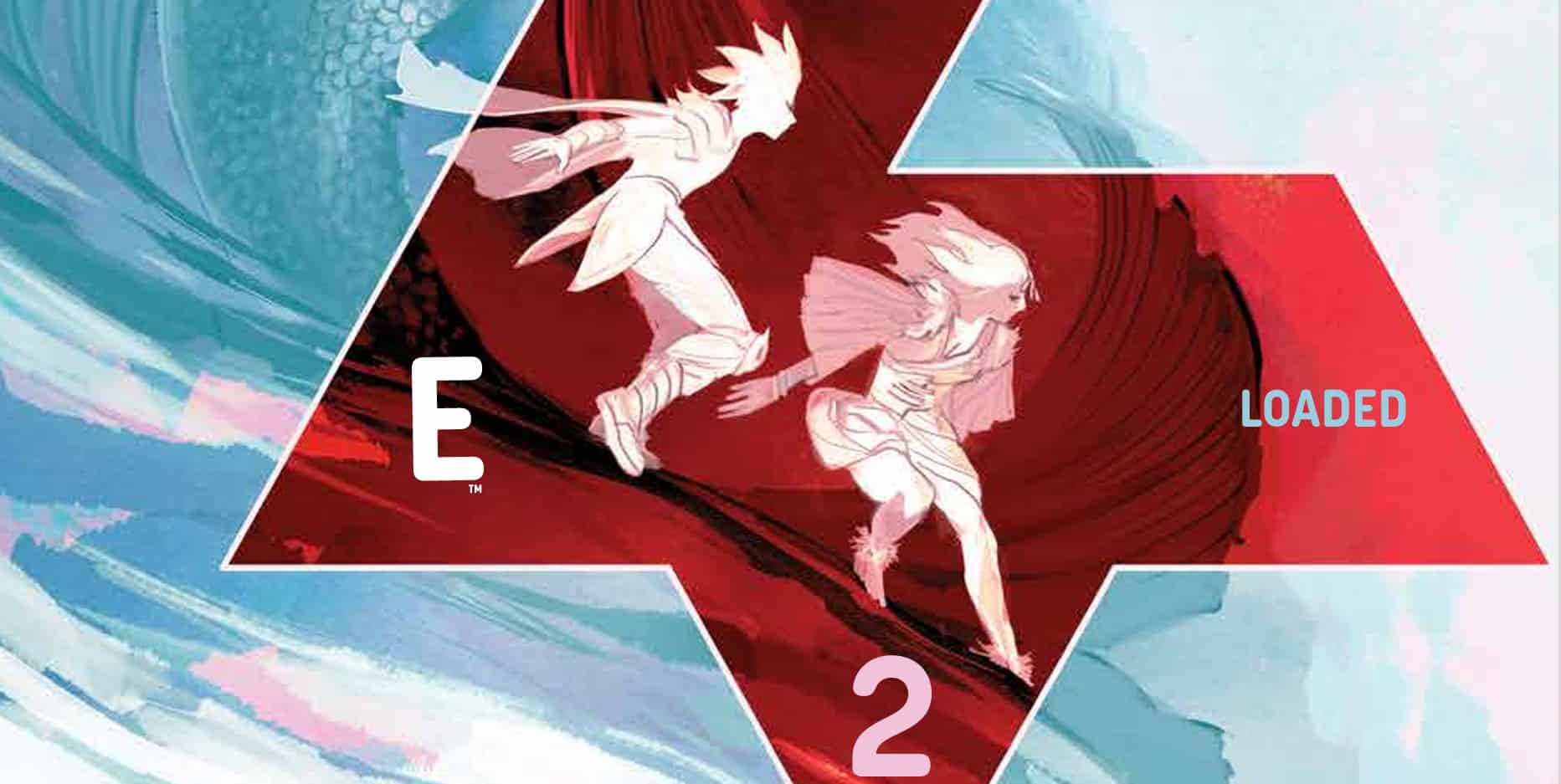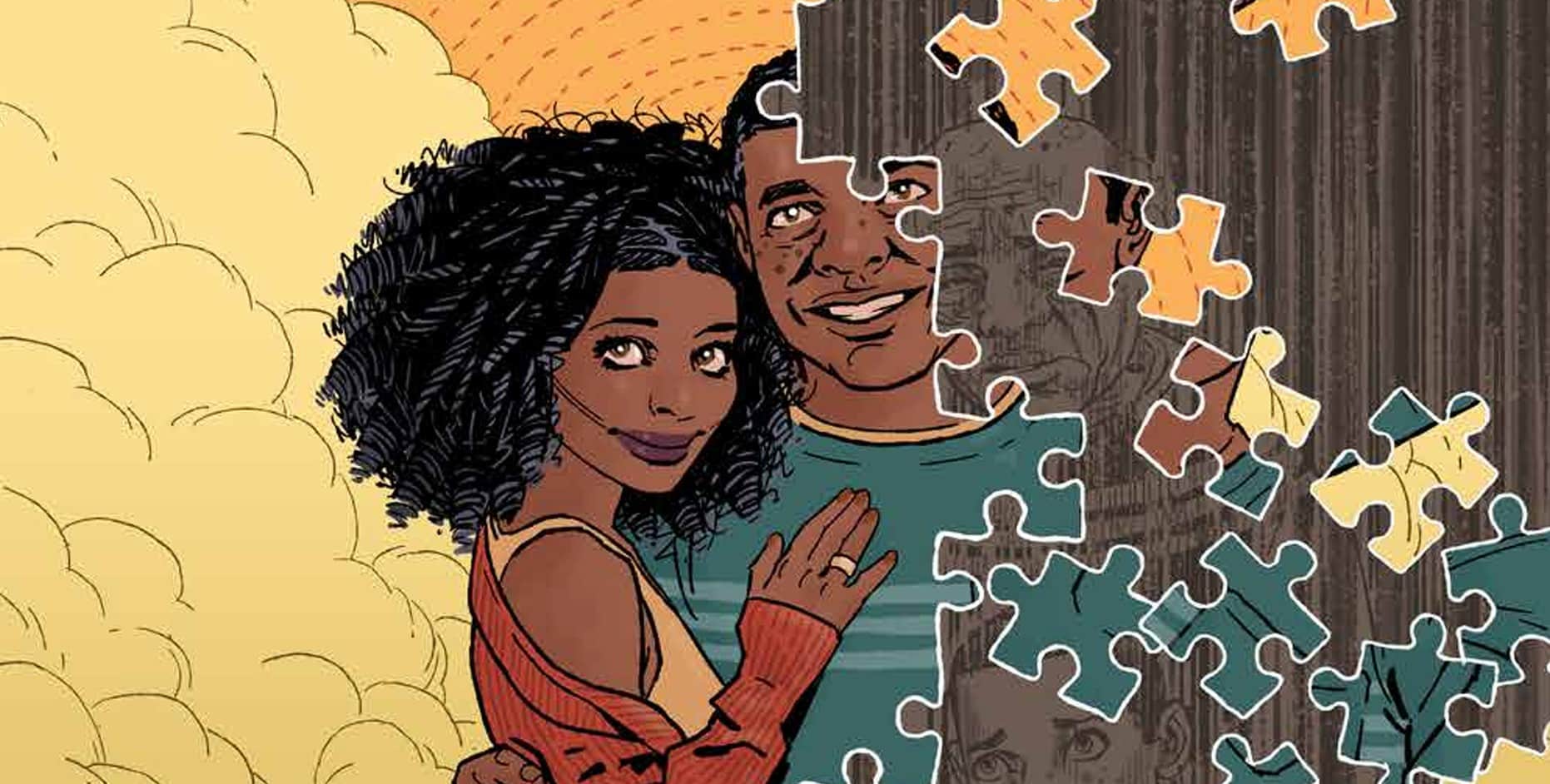The year is 2873, and the East & Peninsula Power Factory has had another toxic spill – and Johannes Vale is having a rough time of it. He’s got a lot of things to answer for. Where are his plans for his grad school thesis? Where did this blood-stained handkerchief come from? And, most importantly, why can’t he remember what’s going on in his life? Answers are waiting to be found in The Six Fingers #1, written by Dan Watters, drawn by Sumit Kumar, colored by Lee Loughridge, lettered by Aditya Bidikar and designed by Tom Muller for Image Comics.
This is not a murder mystery.
Sure, there’s a murder most horrid, a question of what’s going on, and a killer with a shady past. But, and I’d like to avoid spoiling both The Six Fingers and its companion book, The One Hand, we know who did it and we know how he did it. What we don’t know is why he did it and, for that matter, what kind of person he is.
We get an inkling about our protagonist, Johannes Vale, pretty early on: He’s a fuckup who frequently pays attention to the wrong thing. He’s an asshole who wants to control every single aspect of his life. He will throw himself into dangerous, downright deadly situations, just so he can cut through the bullshit and meet a quota for a job he doesn’t even like.
This is someone who has been wasting his potential on someone else’s vision. Johannes appears to be another in a long line of twentysomethings with a chip on his shoulder and a sense that the world owes him. What propels him forward, what makes him tick is his need for control. In the book’s own words, it’s pathological.
But let’s stop and talk about memory.
If I am being honest – and what point would there be in being a dishonest critic – I have gaps in my memory. Moments where I can’t remember when something has happened or what it means. Furthermore, my family has a history of Alzheimer’s disease. I’ve spent decades paranoid of losing what little memories I do have to a black hole. Throughout the book, artist Sumit Kumar and colorist Lee Loughridge highlight this aspect by removing aspects of character.

Kumar’s art leans toward detail. The sun is frequently shining throughout the pages, and everything is illuminated. The coldest of figures are contrasted by the harsh warmth of light. Even in a dark, ruined room, we can see the various clothes, books and papers strewn about the place. Indeed, the only time when shadows consume anything is when we focus on Vale. Consider Galina, who even when drawn in shadows still shows details of her face. By contrast, Kumar frequently draws Vale either looking away from the reader, engulfed completely in darkness, or cut off by the panel’s edge.
We are presented with aspects of a whole without the entirety of it. We, much as the opening narration notes, have gaps in our knowledge. Such is the case with every first issue of a comic, but moreover it feels deliberate. Yes, there are discussions about missing pieces, but the story seems to be pulling toward the darkness.
It feels as if we’re inside the mind of Vale. Our protagonist wants to have control over his life, and wants answers to the questions. But the comic frequently dissuades us – and, subsequently, Vale – of this control. Panels bleed over and under each other. Details are lost to shadows and borders. There is no grid keeping things in line, even the shape of panels becomes jagged and unstable as revelations hit our protagonist on the nature of his inner life.
And yet, we nevertheless strive for that stability, that control.
Another interesting aspect of the book is that it’s not just one book. Rather, it’s two books in conversation with one another. The other comic, The One Hand (covered on ComicsXF by Armaan Babu), tells a story with its own web of complexities, contradictions and implications. The vibes are different, but the connective tissue of Loughridge’s colors, Aditya Bidikar’s letters and Tom Muller’s design makes it feel like a cohesive narrative.
But at the end of the day, neither of these stories is a mystery, as interesting as they could be. They’re character pieces about two men in the same city at around the same time. What makes the enterprise worthwhile is, as in all art, how it’s told. What techniques the author decides to use to tell the story. What aspects the story chooses to ignore completely. Whose perspective we see things from. What details are excluded, included, fabricated and discovered. I have been looking forward to both The One Hand and The Six Fingers for quite some time. And I have not been disappointed. The teams behind the books have developed an engrossing experience, and I highly recommend you pick it up as soon as you can.
Buy The Six Fingers #1 here. (Disclaimer: As an Amazon Associate, ComicsXF may earn from qualifying purchases.)
Dan Grote is the editor and publisher of ComicsXF, having won the site by ritual combat. By day, he’s a newspaper editor, and by night, he’s … also an editor. He co-hosts The ComicsXF Interview Podcast with Matt Lazorwitz. He lives in New Jersey with his wife, two kids and two miniature dachshunds, and his third, fictional son, Peter Paul Winston Wisdom. Follow him @danielpgrote.bsky.social.





